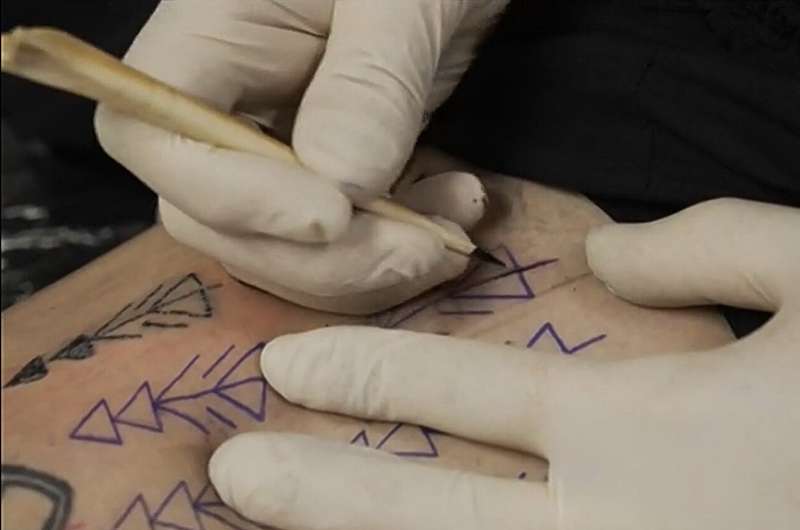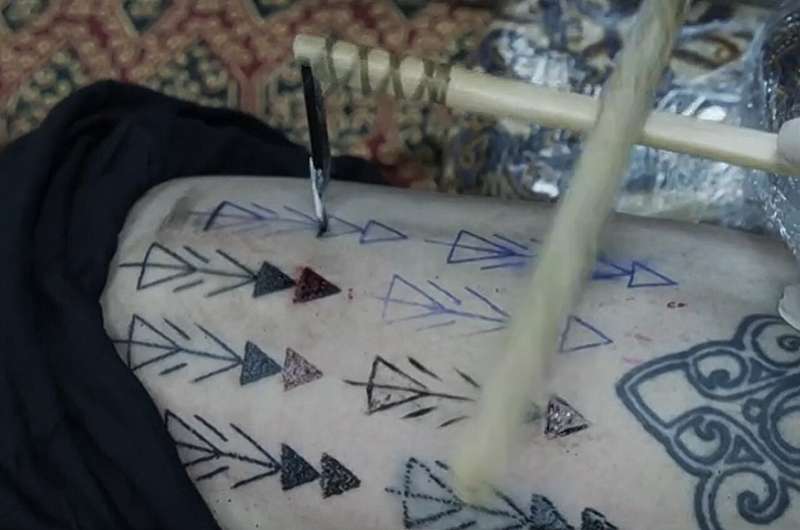March 19, 2024 report
This article has been reviewed according to Science X's editorial process and policies. Editors have highlighted the following attributes while ensuring the content's credibility:
fact-checked
trusted source
proofread
New evidence suggests Ötzi the Iceman's tattoos were made using a single-pointed tool

An international team of archaeologists, historians and tattoo artists has found evidence that suggests Ötzi the Iceman's tattoos were made via hand-poking with a single-pointed tool. In their study, published in the European Journal of Archaeology, the group compared ancient tattooing techniques on modern skin with tattoos on Ötzi's skin.
Ötzi the Iceman was found in the Italian Alps in 1991 by hikers. Study of his remains showed he met his fate approximately 5,300 years ago, downed by an arrow to the back. In addition to other findings, the Iceman was found to have an abundance of tattoos on his body—on his lower back, his abdomen, lower legs and his left wrist. Researchers have since wondered how they were made.
Prior research has suggested four possibilities: hand poking, subdermal tattooing, hand tapping and incision. Because many of the tattoos involved short, straight lines, many have suggested the tattoos were likely made using the incision method, in which an incision is made into the skin using a sharpened object, such as a stone, and a coloring material, such as ash, is introduced into the incision. In this new effort, the research team sought stronger evidence.

The researchers recruited a tattoo artist as a guinea pig. He volunteered to make multiple tattoos on his leg that were similar to those found on Ötzi using the four techniques. After the tattoos healed, the researchers captured close-up images of each of the tattoos and compared them with Ötzi's. They found the new tattoos made via the hand-poking method were most similar to Ötzi's, making it the most likely method used by the Iceman.
The hand-poking method involves sharpening the end of stick to a point, then dunking it in a coloring ink. The tip of the stick is then pushed into the skin, taking a bit of the ink with it. As the stick is removed, the ink is left behind. To create a line using this method, multiple pricks would be required, each new one abutting the prior one. This method, the team notes, results in a line with tiny, overlapping disks—a result observed both with the tattoos created for this new work and on Ötzi's body.
More information: Aaron Deter-Wolf et al, Chalcolithic Tattooing: Historical and Experimental Evaluation of the Tyrolean Iceman's Body Markings, European Journal of Archaeology (2024). DOI: 10.1017/eaa.2024.5
© 2024 Science X Network




















